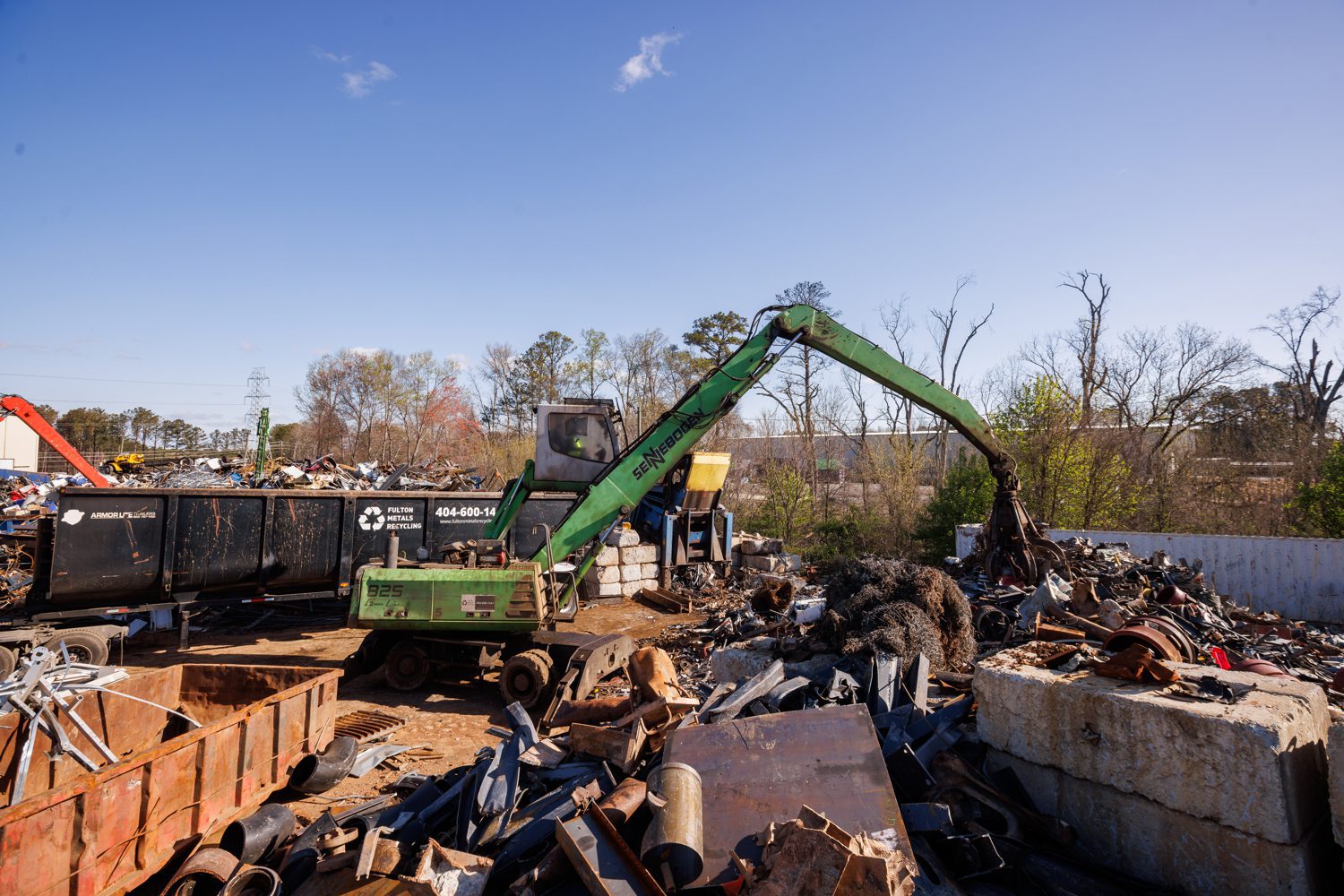From Job Site to Smelter: The Scrap Metal Recycling Process Explained
Every day, Georgia’s construction sites, warehouses, manufacturers, and fabricators generate tons of scrap metal. What happens after that material leaves your site? The scrap metal recycling process is far more advanced - and valuable - than most people realize.
At Fulton Metals Recycling, we manage every stage of this process, ensuring that your scrap becomes part of the global cycle of reuse. Understanding how this works helps businesses appreciate the efficiency, transparency, and sustainability behind every load we haul.
Step 1: Collection and Pickup
The recycling process begins where the scrap is generated — on your production floor, demolition site, or job location. Once you’ve filled your designated containers, Fulton Metals Recycling coordinates prompt pickup using roll-off boxes, flatbeds, or end-dump trailers, depending on material type and volume.
Our logistics focus:
- Right-sized containers to fit your space and scrap flow.
- Scheduled or on-demand pickups to match production cycles.
- Fully insured drivers for safety and compliance.
This first step ensures efficiency from the moment your scrap leaves the site.
Step 2: Weighing and Inspection
After collection, each load is transported to our facility, where it is weighed using certified scales. This ensures accuracy and fair payment for every customer.
The inspection process includes:
Verifying metal type and grade.
Checking for contamination or mixed materials.
Sorting out any non-recyclables.
Accurate weighing and grading protect both the recycler and the customer - and they’re the foundation of our transparent pricing system.
Step 3: Sorting and Separation
Once weighed, materials are carefully sorted by metal type and purity. This is one of the most critical steps in the scrap metal recycling process, as it determines the quality of the recycled product.
How it’s done:
Magnetic separation – Used to distinguish ferrous metals (like iron and steel) from non-ferrous metals (like copper, aluminum, and brass).
Density and color identification – Further separates metals by grade and alloy.
Manual and automated systems – Used to ensure maximum recovery and minimal contamination.
The cleaner and more precise the sorting, the higher the end value.

Step 4: Processing and Shredding
Shredding increases surface area, reducing the energy required for melting and speeding up the smelting process.
Processing techniques include:
Hydraulic shears and balers for compacting steel.
Shredders for aluminum, copper, and other non-ferrous metals.
Granulators for fine wire and electronics.
These preparations transform your scrap from bulky waste into valuable raw feedstock ready for re-manufacturing.
Step 5: Melting and Purification
Next, the sorted scrap is melted in high-temperature furnaces. Each type of metal has its own melting point and requires specialized equipment.
During melting, impurities are removed through fluxing or filtration. The goal is to create a clean, pure metal suitable for reuse in new manufacturing.
Fun fact:
Recycling metal uses up to 90% less energy than producing new metal from ore — one of the main reasons recycling is so environmentally powerful.
Step 6: Solidifying and Transportation
Once purified, the molten metal is poured into molds to create bars, ingots, or sheets. These forms are easy to transport and reintroduce into the manufacturing cycle.
The newly recycled metal is then sold to mills, foundries, and manufacturers, where it’s used to create everything from car parts and appliances to new construction materials.
This completes the cycle - turning yesterday’s scrap into tomorrow’s products.
The Role of Transparency and Compliance
At every step of the scrap metal recycling process, Fulton Metals Recycling emphasizes transparency, safety, and compliance.
Certified scales for honest weights.
Formula-based pricing tied to market indexes.
Certificates of Destruction and Insurance for risk protection.
Sustainable handling that meets EPA and local regulations.
We make sure your materials are managed responsibly from start to finish.
Recycling isn’t just about hauling away scrap — it’s a complete, carefully managed process that conserves resources, protects the environment, and delivers measurable value back to your business.
When you understand the scrap metal recycling process, you can see the true impact behind every container you fill.
At Fulton Metals Recycling, we turn logistics into sustainability — and waste into revenue.
